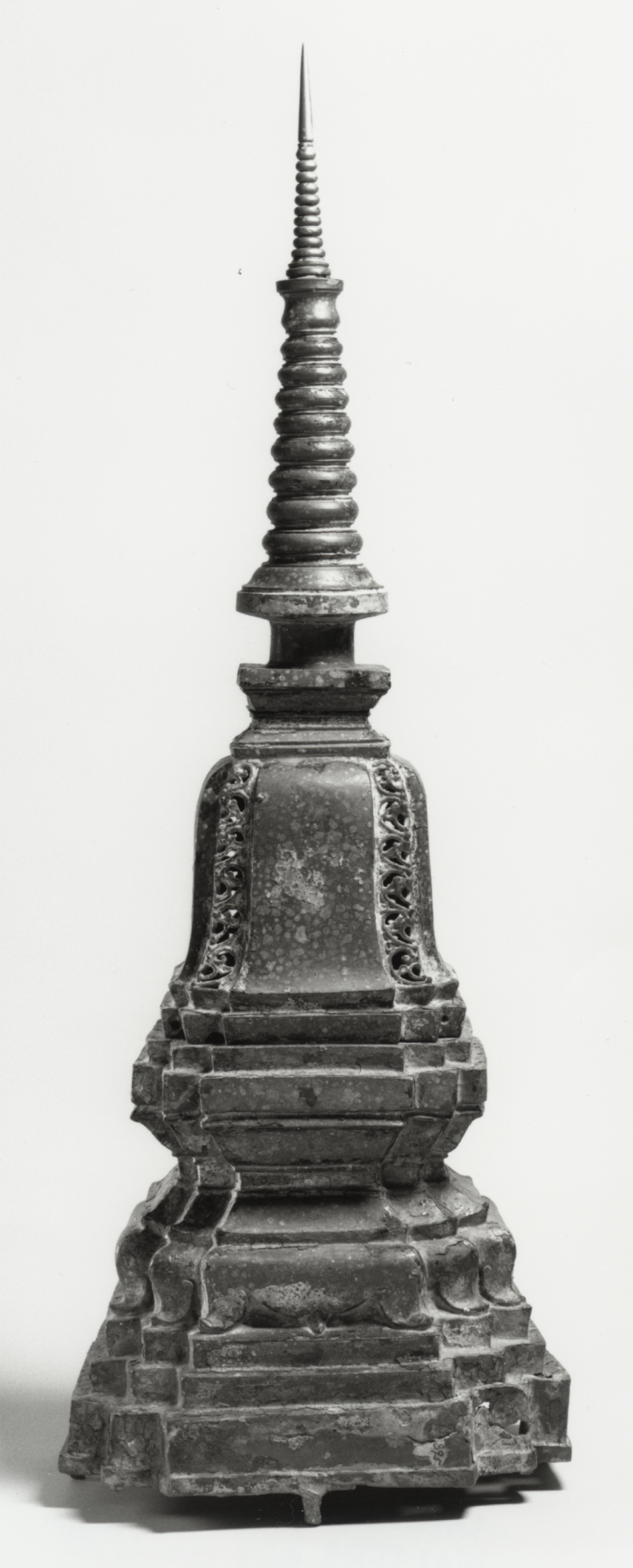Reliquary
(Southeast Asia )
This model of a faceted "chêdî" probably served as a reliquary and was installed in a brick-and-stucco monument of the same shape. The internal construction, with a flat surface at the top of the base, suggests that a sacred deposit would have been placed at the foot of the faceted central or bell element.
The origins of the faceted "chêdî" are obscure; perhaps it was an Ayutthaya response to the flat-sided reliquary tower of northeastern Thailand.
On this reliquary, the main faces of the central bell element are broader than they are in the faceted masonry "chêdî" of Ayutthaya. Ornament of the sort that appears on the corners of the reliquary has not been identified; it may be characterisitic of a provinicial site.
Inscription
Provenance
Provenance (from the French provenir, 'to come from/forth') is the chronology of the ownership, custody, or location of a historical object. Learn more about provenance at the Walters.
Bangkok (?); Alexander B. Griswold, Monkton, November 1955, [presented to the Breezewood Foundation, inv. no. 895]; Walters Art Museum, 1979, by gift.
Exhibitions
| 2005-2006 | The Kingdom of Siam: Arts of Central Thailand, 1350-1800. Asian Art Museum, San Francisco; Peabody Essex Museum, Salem. |
| 1995 | Unearthly Elegance: Buddhist Art from the Griswold Collection. The Walters Art Gallery, Baltimore. |
Conservation
| Date | Description | Narrative |
|---|---|---|
| 2/17/1984 | Examination | examined for condition |
Geographies
Thailand (Place of Origin)
Measurements
with restored spire: 33 11/16 in. (85.5 cm);
base: 11 5/16 in. (28.8 cm);
bell: 7 9/16 in. (19.2 cm);
turret: 10 1/4 in. (26 cm)
Credit Line
Gift of A. B. Griswold, 1979
Location in Museum
Not on view
Accession Number
In libraries, galleries, museums, and archives, an accession number is a unique identifier assigned to each object in the collection.
In libraries, galleries, museums, and archives, an accession number is a unique identifier assigned to each object in the collection.
54.2556


